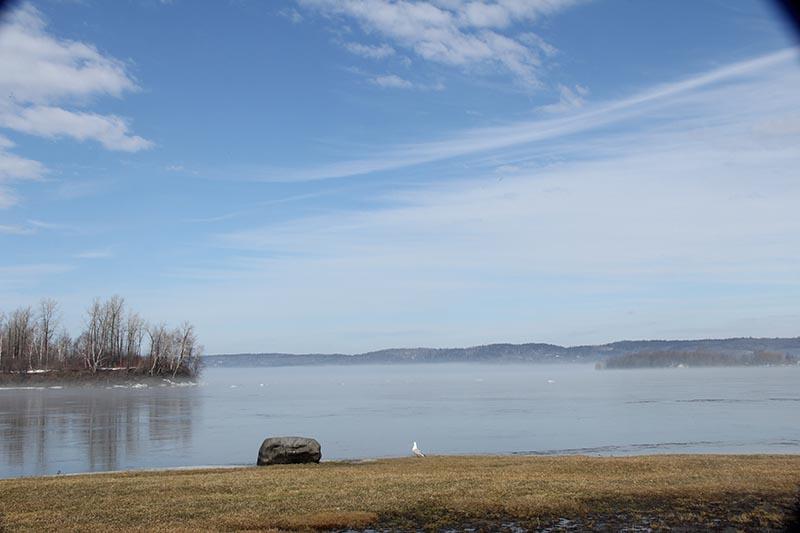History of Ottawa River preserved as part of Heritage Rivers System
After a decade of delays, the Ontario provincial government and the federal government have designated the Ottawa River as one of 42 heritage rivers in Canada – but just the Ontario section.
In 2006, Former Ottawa Valley Liberal Member of Parliament (MP) Len Hopkins nominated the Ottawa River for heritage designation. That same year, Quebec opted out of the Canadian Heritage Rivers System, which was founded to give national recognition to Canada’s most outstanding rivers. The program helps to encourage long-term conservation and management programs aimed at preserving the natural, cultural and recreational values of these rivers.
The nomination of the Ottawa River was volleyed back and forth through parliament for a decade. It gained the endorsement of the Canadian Heritage Rivers Board in 2009 and gained its designation as a Canadian Heritage River at the end of July.
The heritage designation applies to 590 kilometres of river that stretches from the head of Lake Timiskaming to East Hawkesbury. It does not apply to the 681 kilometres of the river that flows within Quebec, as the province remains unwilling to participate in the program.
“The Government of Canada is also working with the Government of Quebec to establish recognition of the heritage value of Quebec’s stretch of the Outaouais River (Ottawa River), as the waterway also has significance for the province’s economic and political growth,” says a statement issued by Parks Canada.
In its statement, Parks Canada refers to the Ottawa River as the “original Trans-Canada Highway,” and it applauds the role the river played in the economic and political growth of the region during the fur and timber eras. The river continues to influence the economy and has gained new favour as a tool for recreational tourism.
“This designation is very important for the Ottawa River, for its history and for its beauty. I know a lot of organizations in Quebec who worked hard to lobby for it and I am very pleased by this designation. We started talking about this at least 20 years ago. It’s very rare that you will designate a river. It’s more common for a battleground or a more tangible place,” said Lyne St-Jacques, Director of the Argenteuil Regional Museum. The museum is located on the shores of the Ottawa River, not far from the Carillon Hydroelectric Dam.
The history of the Ottawa River and its influence on Argenteuil County is central to the Argenteuil Regional Museum, which launched a $100,000 interactive exhibit last year titled “Argenteuil: My life as rivers.” The exhibit showcases the expansion of Argenteuil and its citizens, and the shifting flow of its rivers.
“The Ottawa River is part of the history of Argenteuil. When Samuel de Champlain passed through Argenteuil in the early 1600s, his canoe tipped over and he almost drowned in the Long Sault rapids. If the Ottawa River wasn’t here, then Argenteuil may have never been developed,” said St-Jacques.
Heritage River Designation may help protect the Ottawa River
The Ottawa River’s heritage designation may also help to protect it. The Ottawa River Heritage Designation Committee reports that initially, the river may benefit from monitoring and conservation measures taken by government agencies. It says that monitoring programs at other Canadian Heritage Rivers started, or were upgraded as a direct result of their designation. It also improved the chances of receiving government funding for conservation and environmental programs that would impact the river.
Raising public awareness about the role the river plays in the economy, culture and history of the area is also expected to help protect the river.
“Appreciation of the river by its resident community is the best way of ensuring long-term protection,” says a report issued by the Ottawa River Heritage Designation Committee.
Earlier this year, the Ottawa Riverkeeper organization announced that it would be collaborating with researchers from Carleton University, in Ottawa, to conduct testing to determine the extent of microplastic pollution in the Ottawa River.
“Microplastic pollution is rampant in our oceans, and recent studies of inland waterways clearly indicate that the problem also extends to our lakes and rivers,” said Ottawa Riverkeeper staff scientist Doctor Meaghan Murphy, in a statement issued by Ottawa Riverkeeper.
The experiment is the first of its kind to be conducted on the Ottawa River and Murphy referred to the initial results as “troubling.”
“We are testing locations spanning over 550 kilometres of river, from Lake Timiskaming in the north, to Hudson, Quebec near the mouth of the river. So far the study has found microplastics in every sample that has been taken,” said Murphy.
Microbeads are defined as type of microplastics measuring less than 5 millimeters in diameter. They are composed of plastic fragments or fibres and are often found in hygiene products, including facial cleansers. They don’t decompose, are easily carried through waterways and are too small for most water treatment plants to filter them. Aquatic organisms often ingest microplastics, transferring them up the food chain.
On June 29, the federal government recognized the problems posed by microplastics in our waters by listing them as toxic substances, under the Canadian Environmental Protection Act. Draft regulations on a ban of microbeads is expected to be released this fall. The new legislation will make it illegal to use microbeads in personal care products, but will not address all microplastics, including fibres from synthetic clothing and degraded fragments from larger plastic waste.
The Ottawa Riverkeeper has deployed a two-pronged approach to test how serious the problem is. The first step involved using hand-held testing kits that filtered 100 litres of water through a special filter paper that enabled participants to collect data on the number of microbeads present in each sample.
The second method involved using a manta trawl, which used a fine mesh net that attaches to the back of a motor boat. It collected surface samples for scientific study. The trawl was deployed both up, and downriver of Ottawa’s sewage treatment facilities.


